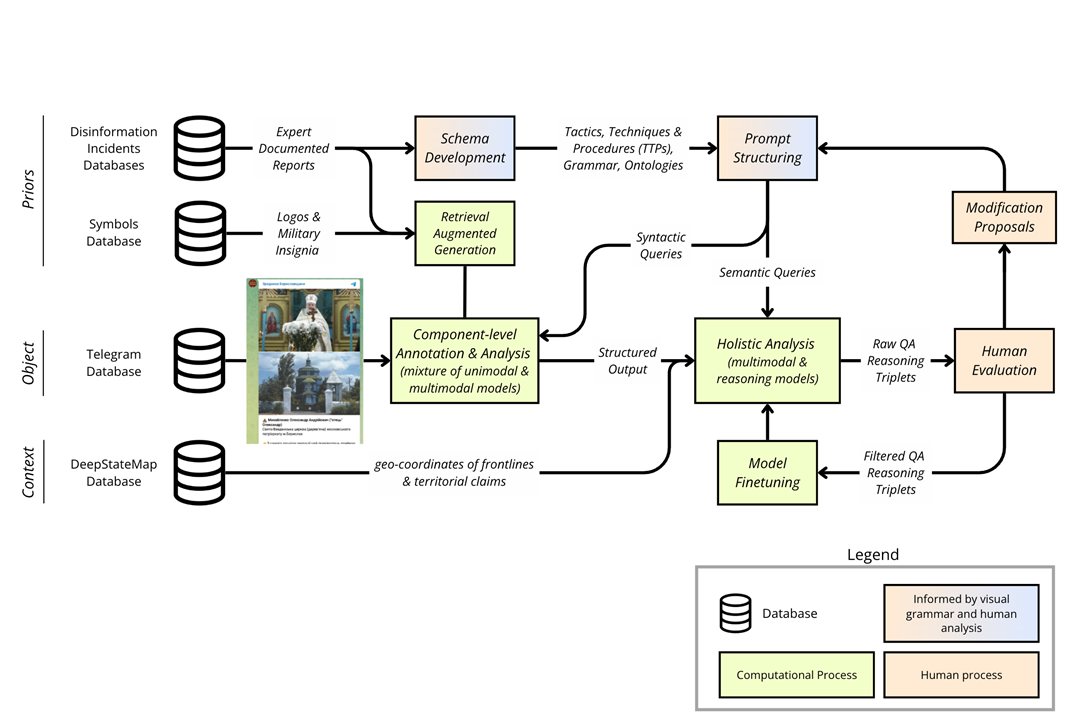Digital Frontlines: Uncovering Russian Propaganda with AI-assisted Mixed Method Research
Contact persons

About
Since the full-scale Russian invasion of Ukraine in 2022, Russian propaganda has pervasively extended into frontline territories through identity-based influence operations (IOs). This research examines how the media content of Russian IOs spreads on Ukrainian Telegram channels and how it impacts people's sense of identity. We focus specifically on visual media—its rhetoric, participatory reproduction, and the role of bots—to understand how propaganda spreads across different channels and what makes certain messages more viral than others. The goal is to push the state-of-the-art data representation methods and human-AI collaboration frameworks to help deepen our understanding of how visual content shapes public opinion and identity during wartime.
Focus and outcome
The student will gain hands-on experience working with Multimodal Large Language Models (MLLMs). Informed by the team’s strong foundations in psychology, social science, and AI engineering, the student will contribute to advancing methods for feature representation, abstraction development, and structuring AIML data pipelines to push the boundaries of visual-oriented semantic reasoning in AI.
The research also offers the student an opportunity to:
- Collaborate with students from MIT in Oslo during Summer ’26.
- Join an international collaboration of researchers from leading disinformation research labs (e.g., Cambridge Social Decision-Making Lab, Center for an Informed Public, etc.).
- Co-author results for high-impact publications.
Qualifications
- Exceptional motivation & problem-solving mindset
- Interest in pursuing an international-level PhD
- Comfort working with Python, Linux, and open-source software modules.

